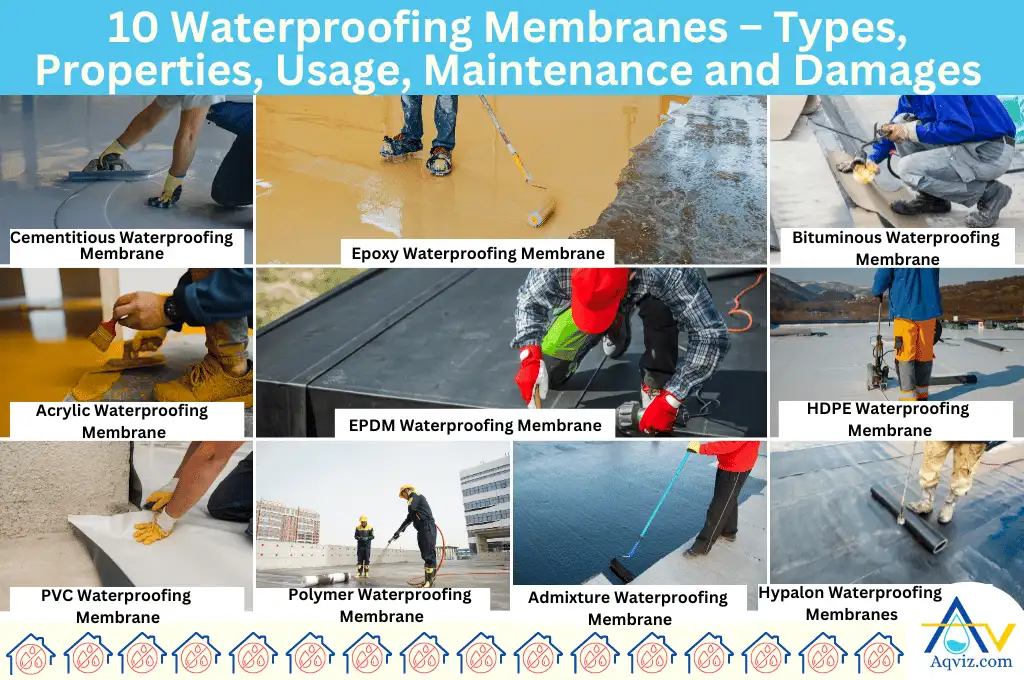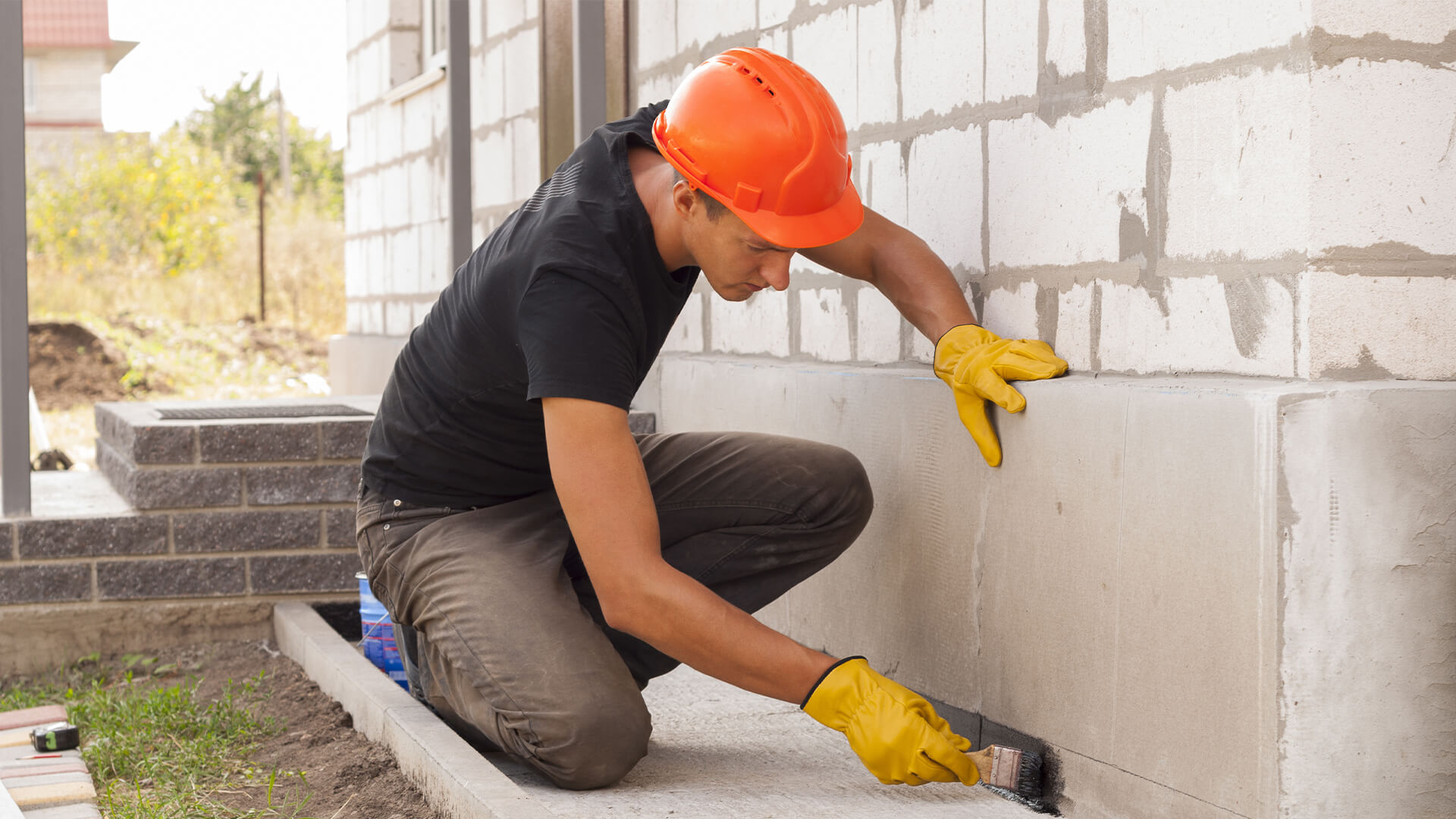Types of Waterproofing: Discovering the Various Methods and Their Applications
Waterproofing is an important element of construction and upkeep. It protects frameworks from the destructive impacts of water damage. There are several methods available, each with its one-of-a-kind applications and advantages. From membrane systems to cementitious solutions, understanding these options is essential for reliable implementation. The choice of waterproofing method can substantially impact sturdiness and durability. Exploring these different techniques discloses their unique benefits and prospective obstacles, triggering further factor to consider of optimal solutions.
Membrane Waterproofing Systems
Membrane waterproofing systems act as a critical obstacle versus water intrusion in numerous structures. These systems commonly include slim sheets made from materials like rubber, thermoplastic, or asphalt, which are related to surface areas to stop wetness infiltration. They can be installed over or listed below quality and are especially reliable in areas susceptible to high water exposure, such as cellars, roofing systems, and foundations.The installment process includes cleaning the substratum, using adhesives or primers, and exactly suitable the membrane to assure full protection. Membrane systems can be either totally stuck, mechanically affixed, or laid loose, depending on the certain needs of the task. They use longevity and flexibility, fitting structural motions without compromising their waterproofing capabilities. These systems can be strengthened with additional layers for boosted protection. Eventually, membrane layer waterproofing systems are important for safeguarding structures versus water damages and preserving long-lasting integrity.
Liquid-Applied Waterproofing Coatings
Liquid-applied waterproofing finishes supply a functional option for securing surfaces from water seepage - French drain installation Omaha. These coverings include fluid products that, when applied, develop a smooth, flexible membrane layer. Their flexibility enables for application on numerous substratums, consisting of concrete, metal, and wood. The finishes can be utilized in varied environments, from property to commercial setups, making them suitable for roof coverings, foundations, and below-grade structures.One considerable advantage of liquid-applied layers is their ability to conform to irregular forms and penetrate fractures, creating a durable barrier against wetness. They frequently exhibit outstanding adhesion residential properties and resistance to UV radiation, ensuring long life and sturdiness. Additionally, the application process is typically simple, permitting fast setup and minimized labor expenses. This technique additionally decreases the threat of water merging, as the constant layer successfully guides water far from susceptible locations. Generally, liquid-applied waterproofing coverings are an efficient option for thorough water defense
Cementitious Waterproofing Solutions

Cementitious waterproofing solutions supply a robust alternative for frameworks needing trustworthy wetness protection. These systems mostly use a mix of concrete, sand, and chemical ingredients to produce a water resistant obstacle. They are frequently related to surfaces such article as concrete wall surfaces, structures, and floorings, providing a resilient, durable defense against water intrusion.One of the vital benefits of cementitious waterproofing is its ease of application; it can be used utilizing a brush, roller, or spray, making it appropriate for numerous task dimensions. Furthermore, this technique works with numerous surface areas and can typically be utilized combined with various other waterproofing techniques.Cementitious remedies are particularly reliable in environments where water exposure is a concern, such as cellars or below-grade structures. Their superb attachment residential or commercial properties guarantee that they bond well with substrates, offering a strong and impenetrable layer against wetness penetration.
Bentonite Waterproofing
Bentonite waterproofing is a very reliable technique that makes use of salt bentonite clay to develop an all-natural obstacle against water. This method makes use of the special properties of bentonite, which broadens upon contact with read more water, sealing any kind of potential leaks and avoiding wetness seepage. It is commonly made use of in various applications, including foundation wall surfaces, passages, and maintaining walls, where water resistance is essential.Bentonite can be applied in a number of types, such as panels or coverings, giving versatility in installment. Its capability to self-seal makes it an appealing alternative visite site for locations based on changing soil or ever-changing water levels. Furthermore, bentonite waterproofing is eco pleasant, as it is an all-natural product that does not introduce dangerous chemicals into the environments.
Drain and Outside Waterproofing Equipments
Reliable waterproofing typically includes a combination of methods, consisting of water drainage and outside systems. Drain systems, such as French drains and sump pumps, are made to reroute water away from structures, minimizing hydrostatic stress versus foundations. These systems are important in avoiding water accumulation that can result in structural damages and mold and mildew growth.External waterproofing, on the other hand, entails applying safety barriers to the building's outside. Strategies such as the installment of water resistant membranes, coatings, or sealers can help stop water infiltration. This approach not only protects the foundation however likewise improves the overall longevity of the structure.Together, water drainage and external waterproofing systems develop an extensive remedy to manage water efficiently. By carrying out these strategies, residential or commercial property owners can secure their financial investments versus the damaging impacts of wetness, making sure long-term stability and security for their structures.
Regularly Asked Inquiries
Just how Do I Pick the Right Waterproofing Technique for My Task?
Selecting the best waterproofing method relies on elements such as task type, ecological conditions, budget plan, and desired long life. Assessing these facets enables informed choices tailored to details needs and needs.

Can Waterproofing Be Applied in Winter Conditions?
Waterproofing can be used in winter conditions, but it calls for particular materials and techniques. Cold temperature levels might affect healing times and attachment, necessitating careful choice of products developed for low-temperature application.
What Are the Usual Indications of Waterproofing Failure?
Common indicators of waterproofing failure consist of visible water stains, peeling paint, moist smells, mold and mildew growth, and splits in walls or structures. Water Solutions Omaha. These indications suggest that wetness is penetrating the obstacle, compromising its performance
How Lengthy Does Waterproofing Last Prior To Needing Upkeep?
The longevity of waterproofing varies, generally lasting in between 5 to one decade. Factors such as worldly quality, ecological problems, and upkeep practices affect its durability, demanding periodic inspections to ensure effective security versus water breach.
Exist Eco-Friendly Waterproofing Options Available?
The question of green waterproofing alternatives reveals a growing passion in sustainable materials (Water Solutions). Various natural substances, such as plant-based sealers and recycled items, use reliable remedies while decreasing ecological impact, appealing to environmentally conscious consumers